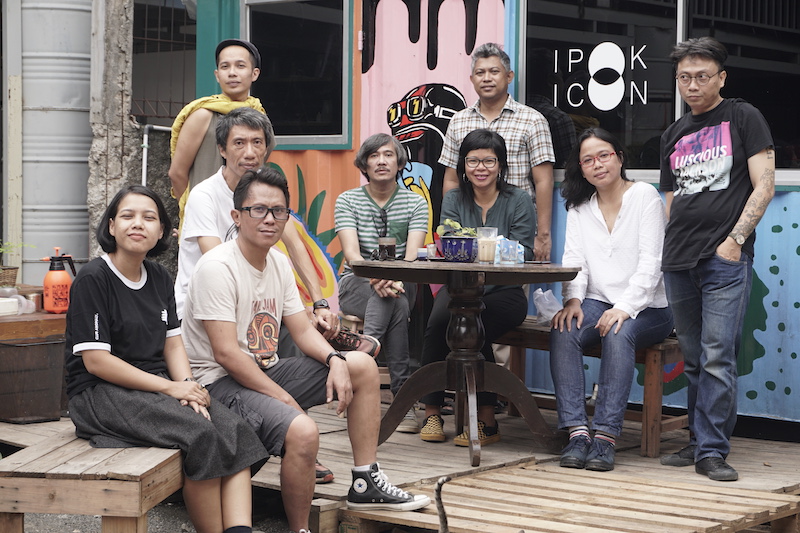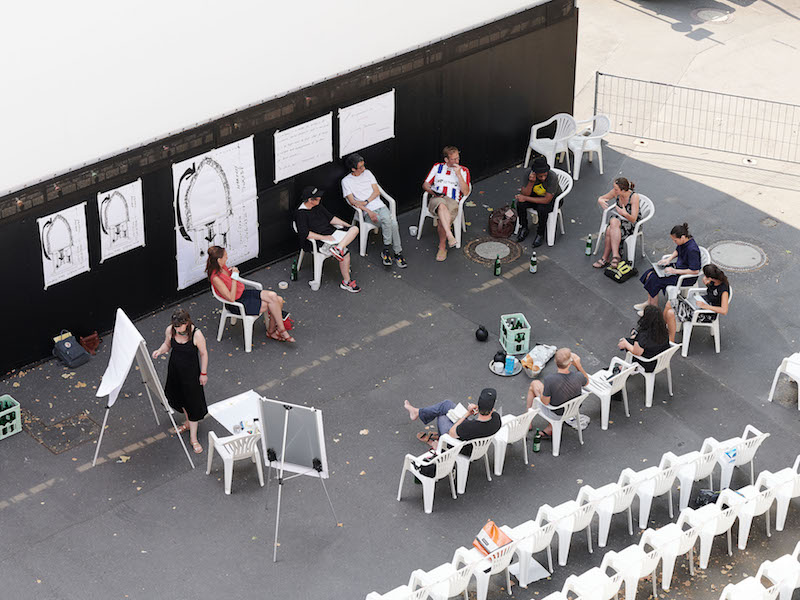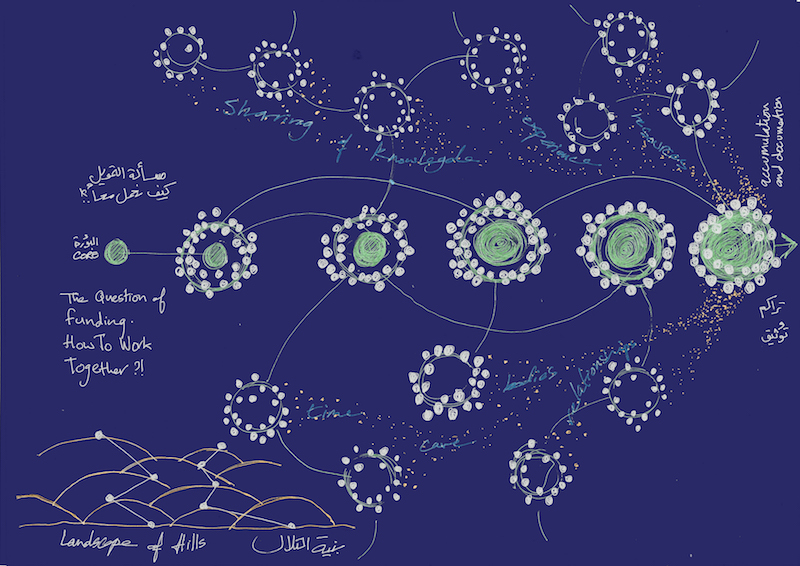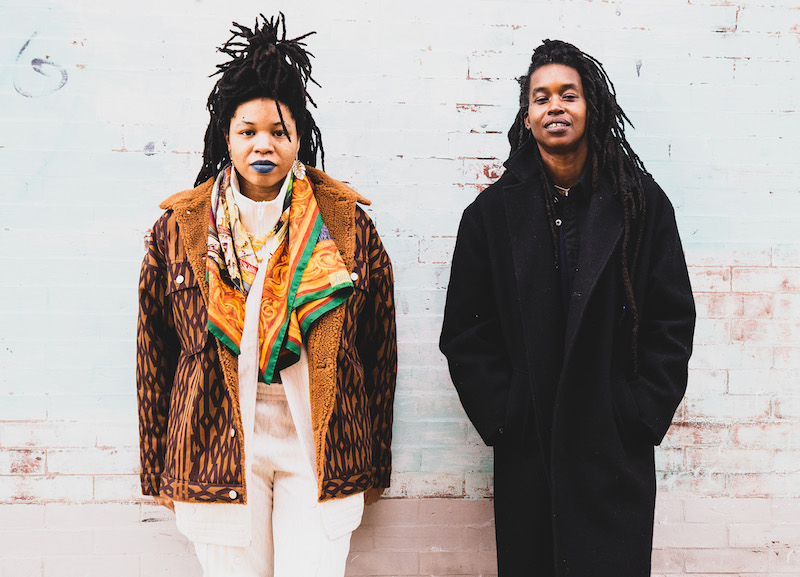by Alison Hugill // Apr. 22, 2022
Jakarta-based artists’ collective ruangrupa is the Artistic Direction of documenta fifteen, which opens to the public in Kassel on June 18th. With a vast knowledge base and previous experience in institution-building as an artistic form, ruangrupa has made the practice of “lumbung” central to this year’s program. In Indonesian, the term describes a place to store communally-produced rice as a shared resource for future use, and has been used as an economic model for many of ruangrupa’s projects, which are often centered on ideas of collaboration, sustainability and the commons. We spoke to one member of the nine-person team, farid rakun, about how they hope to see these principles actualized in the context of the 100-day exhibition and beyond.

ruangrupa: Ajeng Nurul Aini, farid rakun, Iswanto Hartono, Mirwan Andan, Indra Ameng, Daniella Fitria Praptono, Ade Darmawan, Julia Sarisetiati, Reza Afisina, 2019 // Photo by Jin Panji
Alison Hugill: Can you tell us about your choice of “lumbung” as a guiding term and metaphor for the documenta fifteen exhibition?
farid rakun: It’s not a new use of the word. It’s an expanded version, of course, but we have used it back home in Jakarta to refer to how we do things economically. It is not only about finances but also about how we share spaces, human resources and time. All of the entities we participate in become one bigger pot that we can use to achieve other goals. It becomes a collective of collectives in that way. ruangrupa is just one of the collectives.
We used the term again to explain what we wanted to do with documenta, if we were given the chance. It was a working title to explain what we had been doing and, if documenta decided to be part of that journey, it would alter the path—using the existing structure of documenta with its 100 days and its wealth of knowledge—but the journey, the “lumbung,” existed before and would continue after that.

documenta fifteen, Workshop with ruangrupa, Artistic Team and lumbung members, Kassel, 2020 // Photo by Nicolas Wefers
AH: You spoke about the economic structure of “lumbung.” How does this resource sharing work out in practice? How do you work with the artists involved in the exhibition to create this financial model?
fr: There is a certain traditional structure that documenta relies on, and we want to learn from it. But there are two things that we are introducing: one is what we call “seed money.” We don’t want to call it an “artist fee” because this is too transactional. Seed money is an amount that is free to use by the artists or collectives to whom we have extended our invitation. It’s a token of gratitude for what they have been doing. It’s up to them whether they want to keep it for the future.
The other one is what we call the “collective pot.” There are 14 lumbung members, and 53 lumbung artists plus their invited collaborators. We divided the artists into 10 groups called “majelis” or assemblies. Each of these groups has a collective pot. It’s not their production money for their own work, but a kind of experiment. We’ve participated in a lot of biennials and group shows, and a lot of the time each artist or collective has their separate work. This sometimes creates a spirit of competition between the artists. The premise of this experiment is that this competitiveness could be reduced and the collaboration fostered if we ask them to share and get to know each other.
We have learned a lot from this experiment. The ideas the groups came up with were amazing. One example: they realized that participating in documenta in Kassel underlines some inequalities. Participation is easier, cheaper and better supported for those from Europe. For more remote locations with fewer state funding possibilities, not to mention the challenges of Covid with tests and visas, the inequality is stark. At least one majelis has chosen to buffer those extra costs through the collective pot.

The Question of Funding: ‘The Question of Funding, ‘ 2020 // Courtesy of the artists
AH: The Fulda river in Kassel will be a focal point for this exhibition, for the first time in documenta’s history. Can you tell us about that choice?
fr: The river divides Kassel into two very distinct parts, the East and the West. We are particularly interested in the East part of the city. There will be some projects set up along the river, this natural divide. ZK/U from Berlin will flip their old roof, turn it into a boat and sail it to Kassel from Berlin, for example. The plan is that the ship will start its journey before the opening and arrive after documenta has started. But of course there are many unknowns. It might get stuck somewhere and never make it. That’s a risk. Ahoi, which is a boat rental spot along the river, will be used as a venue. And there’s a bridge that will host a series of artworks as well. Black Quantum Futurism will also be working on the river. This should help to bridge the divide, as some of our biggest venues will be in East Kassel. From what I’ve heard, this is the first time that the East is really being engaged for the documenta exhibition.

Black Quantum Futurism, 2021 // Photo by Chris Stitch
AH: How will you facilitate your central idea of “nongkrong” (Indonesian slang for “hanging out”) with the public who will visit documenta fifteen this summer?
fr: Opening an exhibition, we should be hosts to a party. This has a lot of consequences. Energy has to be kept, we can’t be too stressed. How can we get to that point? How can we extend that energy to the public? We won’t be able to meet and greet everyone who comes to documenta. How to make this energy contagious? When it comes to how the public will react, we need to be open. But good intentions are there and visible.
If you ask us, there is no one single truth for how to experience documenta fifteen. You could spend time in only one venue, or go deeper into it and get to know it well. It is also possible to see everything, but it will always be different throughout the run of the exhibition depending on when you visit. For those who want to see more traditional artworks, this will be part of it. We just want to add more layers to it, beyond the mystification of objects.
Exhibition Info
documenta fifteen
Exhibition: June 18–Sept. 25, 2022
Admission: € 27 (Day Ticket)
documenta-fifteen.de
Various Venues, Kassel, click here for map



















